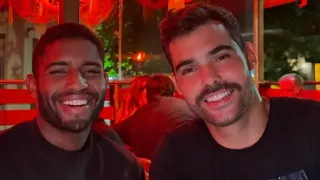
4 hours ago
Wisconsin Planned Parenthood Resumes Offering Abortions After a Nearly Monthlong Pause
Scott Bauer READ TIME: 3 MIN.
Planned Parenthood of Wisconsin resumed scheduling abortions on Monday after a nearly monthlong pause due to federal Medicaid funding cuts in President Donald Trump’s tax and spending bill that took effect at the beginning of October.
Planned Parenthood of Wisconsin said it was able to resume scheduling abortions as of noon on Monday because it no longer fits the definition of a “prohibited entity” under the new federal law that took effect this month and can receive Medicaid funds.
The organization said it dropped its designation as an “essential community provider” as defined under the Affordable Care Act. Dropping the designation will not result in changes to the cost for abortions or other services or affect the organization's funding, Planned Parenthood of Wisconsin president and CEO Tanya Atkinson said.
“At this point, in all of our research and analysis, we really shouldn’t see much of an impact on patient access,” she said. “If relinquishing this does ultimately impact our bottom line, then we will have to understand what that path forward is."
Abortion funding has been under attack across the U.S., particularly for affiliates of Planned Parenthood, the biggest provider. The abortion landscape has shifting frequently since the U.S. Supreme Court ruling in 2022 that allowed states to ban abortion. Currently, 12 states do not allow it at any stage of pregnancy, with limited exceptions, and four more ban it after about six weeks’ gestation.
Planned Parenthood has warned that about half its clinics that provide abortion could be closed nationwide due to the ban in the new federal law on Medicaid funding for Planned Parenthood for services other than abortion.
Wisconsin, where abortion is legal but the Republican-controlled Legislature has passed numerous laws limiting access, was the only state where Planned Parenthood paused all abortions because of the new federal law, Atkinson said.
Because of the complexities and varieties of state abortion laws, Planned Parenthood affiliates are responding to the new federal law in a variety of ways, Atkinson said. In Arizona, for example, Planned Parenthood stopped accepting Medicaid but continued to provide abortions.
In Wisconsin, pausing abortions for the past 26 days meant that women who would normally go to clinics in the southeastern corner of the state instead had to look for other options, including traveling to Chicago, which is within a three-hour drive of the Planned Parenthood facilities.
Affiliated Medical Services and Care for All also provide abortions at clinics in Milwaukee.
Atkinson said she did it was “really, really difficult to say” how many women were affected by the pause in services. She did not have numbers on how many women who wanted to have an abortion since the pause went into effect had to seek services elsewhere.
Planned Parenthood of Wisconsin serves about 50,000 people, and about 60% of them are covered by Medicaid, the organization said.
Given those numbers, the priority was on finding a way to continue receiving Medicaid funding and dropping the “Essential Community Provider” status provided the gateway, Atkinson said.
Wisconsin is part of a multistate federal lawsuit challenging the provision in the law. A federal appeals court in September said the government could halt the payments while a court challenge to the provision moves ahead.
Planned Parenthood of Wisconsin cited a Sept. 29 court filing on behalf of U.S. Health and Human Services that said family planning organizations could continue billing Medicaid if they gave up either their tax-exempt status or the “essential community provider" designation.
By giving up that designation, it no longer fits the definition of “prohibited entity” under the federal law and can continue to receive federal Medicaid funds, the organization said. Planned Parenthood of Wisconsin is not giving up its tax exempt status.
The “essential community provider” designation was originally given to organizations to help make it easier for them to be considered in-network for billing with private health insurers, Planned Parenthood said.
Atkinson called it a “nuanced provision” of the law and she does not anticipate that giving it up will affect Planned Parenthood's ability to continue providing abortions and other services.
Planned Parenthood provides a wide range of services including cancer screenings and sexually transmitted infection testing and treatment. Federal Medicaid money was already not paying for abortion, but affiliates relied on Medicaid to stay afloat. Services other than abortion are expected to expand in light of the new law.
Planned Parenthood performed 3,727 abortions in Wisconsin between Oct. 1, 2023, and Sept. 30, 2024, the group said.






